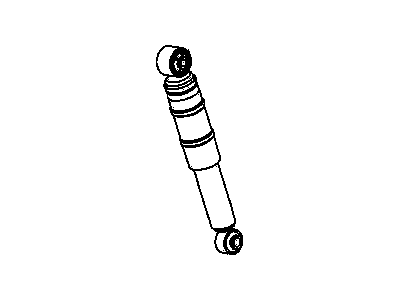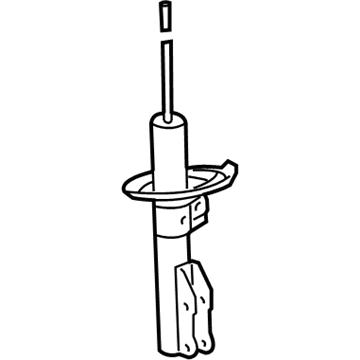
My Garage
My Account
Cart
Genuine Saturn Ion Shock Absorber
Suspension Shock Absorber- Select Vehicle by Model
- Select Vehicle by VIN
Select Vehicle by Model
orMake
Model
Year
Select Vehicle by VIN
For the most accurate results, select vehicle by your VIN (Vehicle Identification Number).
9 Shock Absorbers found
Saturn Ion Rear Shock Absorber Assembly
Part Number: 22719807$46.25 MSRP: $129.13You Save: $82.88 (65%)Ships in 1-2 Business DaysSaturn Ion Front Suspension Strut Kit
Part Number: 22707167$38.58 MSRP: $89.45You Save: $50.87 (57%)Ships in 1-2 Business DaysSaturn Ion Front Suspension Strut Kit
Part Number: 22707164$99.45 MSRP: $295.68You Save: $196.23 (67%)
Saturn Ion Shock Absorber
A device known as the Shock Absorber, is installed in Saturn Ion vehicles and has consisting duty within the suspension system, which main function is to act on shock impulses because it has the capabilities to control and dampen the shocks by creating improved maximum ride quality and control attributes. You know the kind that converts kinetic energy to heat through hydraulic pistons and thus reducing the amount of movement and enhancing stability when driving over rocky ground. The twin-tube and the mono-tube have been used in Saturn Ion models as the shock absorbers, according to the models being used. Twin-tube shocks are popular because they are cheap and build upon a quite simple design, which can be enhanced with gas filling. Still, mono-tube shocks are superior at cooling and performance, allowing for the shocks to be installed in multiple directions. Subtle progress such as PSD and ASD take the shock absorber's capability to another level in terms of responsiveness to the encountered terrain, whereas technologies such as electorheological and magnetorheological dampers result in automobile adaptive suspension systems for greater comfort and control.
Each OEM Saturn Ion Shock Absorber we offer is competitively priced and comes with the assurance of the manufacturer's warranty for the part. Furthermore, we guarantee the speedy delivery of your orders right to your doorstep. Our hassle-free return policy is also in place for your peace of mind.
Saturn Ion Shock Absorber Parts Questions & Experts Answers
- Q: How to remove a front shock absorber on Saturn ION?A:Before taking off the wheel, loosen the wheel nuts, lift the car, and place it securely on jackstands to keep it from falling. Remove the stabilizer bar link first, and if your vehicle has an ABS system, unhook the harness from the strut. To know how to reinstall the strut later, mark where it connects to the knuckle. Then take out the top and bottom nuts from the strut before knocking off the bolts with a hammer and a punch. Take the strut out of the Steering Knuckle carefully, making sure not to stretch the CV joint too far while being mindful to keep the knuckle from moving out toward the brakes to prevent brake hose damage. Use your tools to pull out the single nut on top and lift the strut from where it sits in the fender well. Before repair or replacement, check the strut body for leaks, dents, cracks, and other damage that needs fixing. Check if the spring covering has parchment pieces that corrode early, then check the spring-support seat for any cuts or wear. When problems show up, take the strut apart for fixing. Put the strut assembly in from the side of the fender well, steer it through the shock tower until its studs line up with the shock tower holes. Then bolt on the middle nut (s) to stop it from falling back out. Place the steering knuckle onto the strut flange, put in the two bolts, match the marks, and bolt the nuts to the required torque. Reconnect the brake hose to the strut bracket, reconnect the stabilizer bar link, and, if relevant, place the new speed sensor wiring harness for anti-lock braking systems. When done, bolt on the tire, put on all the lug nuts, bring the ride back down to the ground, tighten all nuts to their specified force, make sure the top mounting nuts are on tight, and check if the front wheel needs an alignment adjustment.







